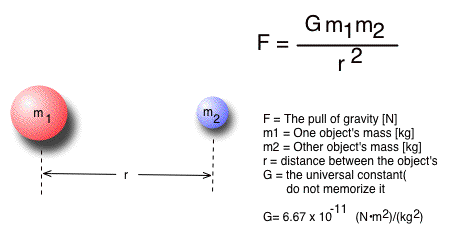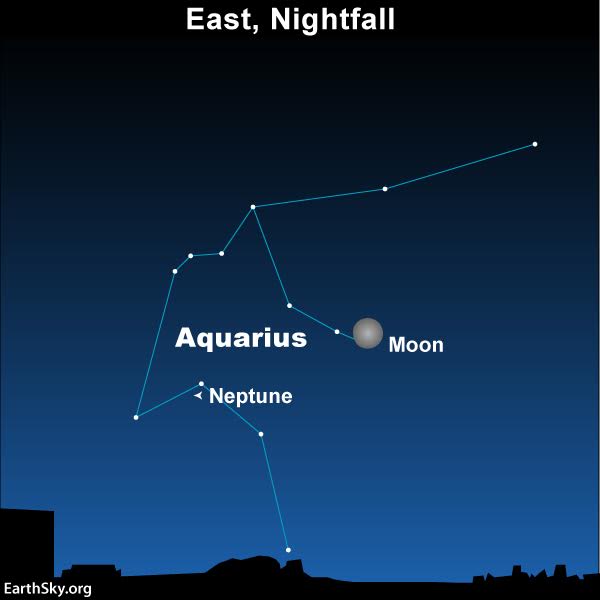My second post in my series of weekly discussion topics for my Introduction to Astronomy online class. Last week I got up close and personal with the many sides of the Moon. This week I take a closer look at the other blue planet in our solar system and how we discovered it without observing it first.

Why was the discovery of Neptune a major confirmation of Newton’s universal law of gravitation?
Before Newton, astronomy relied on observational data from which mathematical formulae and equations were created. Newton pioneered an approach which allowed mathematicians to extrapolate and predict the movement of objects using three assumptions, now commonly known as his laws of motion. Together with his formula for gravitational force, Newton transformed Kepler’s three laws to predict orbits of comets and other solar system objects. He further formulated a mathematical model, known as the Law of Universal Gravitation, that describes the behavior of the gravitational force that keeps the planets in their orbits. (Comins, 2015, p. 42-44)

Fifty years after the discovery of Uranus (William Herschel 1781), astronomers and mathematicians were “puzzled by quirks in the orbit of Uranus. According to Newton’s laws of gravitation, the path Uranus traveled around the Sun didn’t make sense — unless another, unknown planet was pulling it out of line.” (“Predicting Planets – Sky & Telescope,” n.d.)

“The French astronomer Urbain Jean Joseph Le Verrier and the British astronomer John Couch Adams independently predicted the existence and position of the planet Neptune using only mathematics—a pivotal event in the history of astronomy. Neptune, whose existence was visually confirmed in 1846, was the first planet to be discovered by mathematical rather than observational means. The discovery of Neptune not only represents the greatest triumph for Newton’s gravitational theory since the return of Halley’s Comet in 1758, but it also marks the point at which mathematics and theory, rather than observation, began to take the lead in astronomical research.” (“Neptune: The First Planet Discovered by Mathematical Rather than Observational Means: Discovered Simultaneously by Le Verrier and Adams (1843 – 1846) : HistoryofInformation.com,” n.d.)
Adams’ first attempt in 1843 to calculate an orbit was based on a rudimentary circular one, twice the average distance from the Sun to Uranus. He recalculated again in 1845, after completing more observations of Uranus. His second attempt proposed a slightly elliptical orbit. Concurrently in France, Le Verrier, a chemist turned astronomy assistant, became interested in orbit calculations and excelled at them. During the summer of 1845, Le Verrier focused his considerable talent on the Uranus orbit problem. Both mathematicians predictions placed Neptune within one degree (twice the apparent diameter of the Moon) of each other. (Levy & Wallach-Levy, 2001, p. 96-98)
On September 23, 1846 at the Berlin Observatory, Johann Galle discovered the planet, using the predicted parameters published by Le Verrier (Adams did not publish his predictions). (“Neptune – In Depth | Planets – NASA Solar System Exploration,” n.d.) In mid-July 2011, Neptune returned to the same location in the sky (with respect to the stellar background, also known as sidereal) and Hubble commemorated the event with these anniversary photos:

The language of mathematics, thanks in no small part to Kepler and Newton, enabled the scientific method to become an indispensable tool in understanding the universe. These mathematical methods and laws allow anyone to prove, or disprove, the quantitative predictions of the motion of objects in our solar system and beyond. (Comins, 2015, p. 46)
Yesterday, Neptune reached opposition and the day before Earth and Neptune were the closest they would be for this year. (McClure, 2017) Annually, this is the best time of year to attempt to observe Neptune, as I tried to do in August 2012, but I lacked a large enough telescope, at that time, to overcome the light pollution from my backyard observation site.

References
Comins, N. F. (2015). Chapter 2 Gravitation and the Motion of the Planets. In Discovering the Essential Universe (6th ed., p. 42-44,46). New York, NY: W.H. Freeman and Company.
Discovery of Neptune – Wikipedia. (n.d.). Retrieved September 5, 2017, from https://en.wikipedia.org/wiki/Discovery_of_Neptune
Levy, D. H., & Wallach-Levy, W. (2001). 1846: Adams, Le Verrier, and the Scandal Over Neptune. In Cosmic Discoveries: The wonders of astronomy (pp. 96-98). Amherst, NY: Prometheus Books.
McClure, B. (2017, September 4). Earth passing between Neptune and sun | Tonight | EarthSky. Retrieved from http://earthsky.org/tonight/neptune-comes-closest-to-earth-for-the-year
Moss, J. M. (2012, August 18). Fishing for Neptune: Testing the Waters | Misty Midwest Mossiness. Retrieved from https://blog.hennethannun.net/2012/08/18/fishing-for-neptune-testing-the-waters/
NASA – Hubble’s Neptune Anniversary Pictures. (2011, July 12). Retrieved from https://www.nasa.gov/mission_pages/hubble/science/neptune-circuit.html
Neptune – In Depth | Planets – NASA Solar System Exploration. (n.d.). Retrieved from https://solarsystem.nasa.gov/planets/neptune/indepth
Neptune: The First Planet Discovered by Mathematical Rather than Observational Means: Discovered Simultaneously by Le Verrier and Adams (1843 – 1846) : HistoryofInformation.com. (n.d.). Retrieved from http://www.historyofinformation.com/expanded.php?id=4464
Predicting Planets – Sky & Telescope. (n.d.). Retrieved from http://www.skyandtelescope.com/astronomy-news/predicting-planets/


Very well written, except for the typo I’ll tell about when you call. Understandable, too. Thanks.
Corrected and updated. Thanks!
Your post reminds me of an old saying. The best way to learn something is to teach it. You did a great job. I’ve dabbled in astronomy a couple times in my life. I never got good finding things other than the naked eye planets and a handful of Messier objects. The last time I had a 120mm refractor. I was at work one day and met a lady who said she was saving up to buy a telescope. I gave her mine. Sometimes I think about getting another, but I think about how bright the skies in the city are at night, and how far I have to drive to get to dark skies.
I’m so close to finishing a huge project at work that I hope to drag out my telescope before year’s end. It has been well over a year since I looked through an eyepiece. Glad you enjoyed this post. I had fun researching and writing it.